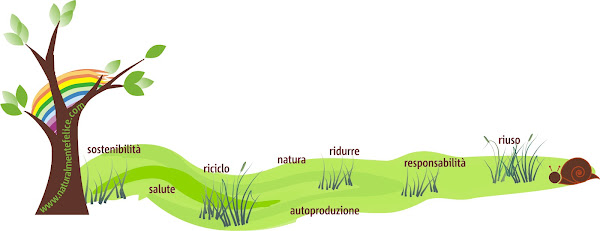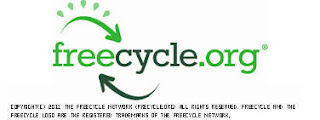Da pochi giorni mi sono iscritta ad un sito che mi pento di non aver scoperto prima!
Si chiama freecycle ed è davvero semplice da utilizzare e con una filosofia che sposo in pieno.
Avete qualcosa che non vi occorre più? non volete barattarla perchè non vi va di accumulare nuovi oggetti?
Allora REGALATELA!
Freecycle è un gruppo dedicato al riciclo degli oggetti e fa parte di The Freecycle Network®, con oltre 5000 gruppi analoghi in tutto il mondo.
In ogni regione c'è un gruppo attivo, molto spesso in ogni provincia.
C'è un'unica regola da rispettare: tutti gli oggetti descritti nei messaggi pubblicati sono offerti gratuitamente!
The Freecycle Network® è un'organizzazione senza scopo di lucro dedicata a coloro che preferiscono "riciclare" un oggetto anziché gettarlo via.
Gli iscritti possono inviare messaggi per oggetti di ogni tipo, che si tratti di una sedia, di un pianoforte o di un vecchio computer.
Freecycle è anche un luogo ideale dove scovare oggetti interessanti.
Sono una fan del baratto. l'ho scritto più e più volte.
Ma il fatto di donare oggetti che non ci occorrono più, magari ingombranti e che teniamo in cantina da anni, a persone che vengono direttamente a prenderli mi sembra un ottimo modo, comodo e veloce, per fare decluttering e per non sprecare nulla.
Nello stesso modo, andare a prendere un oggetto che ci occorre, direttamente nella sede in cui si trova, poterlo vedere e portarlo via, mi sembra un ottimo modo per ottenere ciò che si vuole senza soldi.
Mariaelena
I have subscribed to this website a few days ago and I am really sorry that I had not discovered it before!
You have something you don’t need anymore? You don’t want to bart it because you don’t want other things?
Well then GIVE IT AWAY!
Freecycle is a group which is dedicated to re-using objects and is part of The Freecycle Network®, which has over 5000 groups worldwide.
In each region there is an active group, and sometimes even in the Provinces.
There is only on rule to follow: All objects described in the published messages are given free!
The Freecycle Network® is an organization which does not require any money dedicated to those who prefer to “reuse and recycle” instead of throwing away. "
The Freecycle Network® is an organization which does not require any money dedicated to those who prefer to “reuse and recycle” instead of throwing away. "
All subscribers can post messages of all kinds, from giving away a chair, a piano or an old pc.
Freecycle i salso an ideal way to find interesting objects!
Freecycle i salso an ideal way to find interesting objects!
As you know I am a fan barter, I have been writting about it many and many times again.
But the idea of donating an object which we don’t need anymore, maybe a big piece of furniture and that we have been keeping in the cellar for years, to someone who comes and picks it up, seems to me an excellent way to do decluttering and to eliminate extra waste
But the idea of donating an object which we don’t need anymore, maybe a big piece of furniture and that we have been keeping in the cellar for years, to someone who comes and picks it up, seems to me an excellent way to do decluttering and to eliminate extra waste
Going to pick up an object directly where it comes from is a great way to see it and take it away without spending any money!



